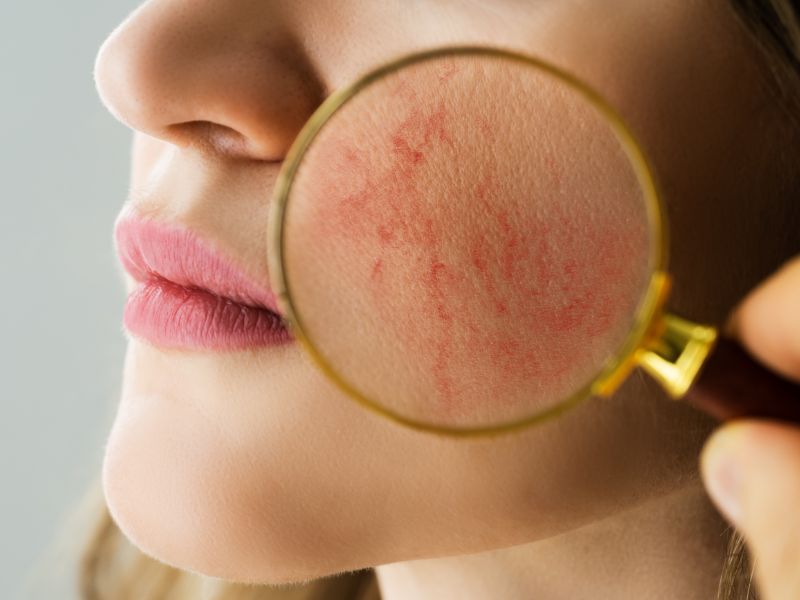Rosacea: Triggers and Treatment Options
Rosacea is an inflammatory skin condition characterized by facial redness, bumps and flushing. Rosacea can be a challenging condition, but with proper care and treatment, it can be effectively managed.

What are the symptoms of rosacea?
Symptoms of rosacea include persistent redness, frequent blushing and flushing, the presence of red bumps, visible blood vessels and swelling of the nose. If left untreated for an extended period, rosacea can lead to a condition known as Rhinophyma. Additionally, some individuals with rosacea may experience eye-related symptoms such as dryness, itchiness, and grittiness.
How to manage rosacea?
The first step in controlling rosacea is to identify and manage the factors that contribute to its flare-ups. This includes avoiding sun exposure by using a non-irritating sunblock and protecting the skin’s barrier function by applying suitable emollients. It is also essential to refrain from using cosmetic products, such as bleach and whitening creams, which can exacerbate rosacea symptoms.
In addition to external triggers, certain internal factors can also contribute to rosacea flare-ups. These include consuming alcohol, and spicy foods. By avoiding these triggers and adopting a gentle skincare routine, including the use of mild face washes, suitable moisturizers, and avoiding harsh exfoliants and toners, individuals can help keep their rosacea symptoms in check.


Can rosacea be cured?
While rosacea is generally not curable, it can be effectively managed and controlled by targeting its triggers.

What are the treatment options available for rosacea?
Although rosacea cannot be fully cured, it can be effectively managed with various treatment options. Topical gels containing ingredients like metronidazole, anti-inflammatories, and antibiotics can help reduce redness and inflammation. Oral medications, such as tetracyclines and aminocyclines, may be prescribed for individuals with more severe symptoms.
The latest advancements in laser technology, including IPL (Intense Pulsed Light), ND:YAG, PDL (Pulsed Dye Laser), and specialized microneedling devices such as Sylfirm X, offer promising results in treating rosacea. These treatments have shown remarkable improvement, even for individuals who have struggled with long-term topical cream usage without significant results.
Ready to get started?
If you’re seeking treatment options or further assistance, our experienced team is here to help.